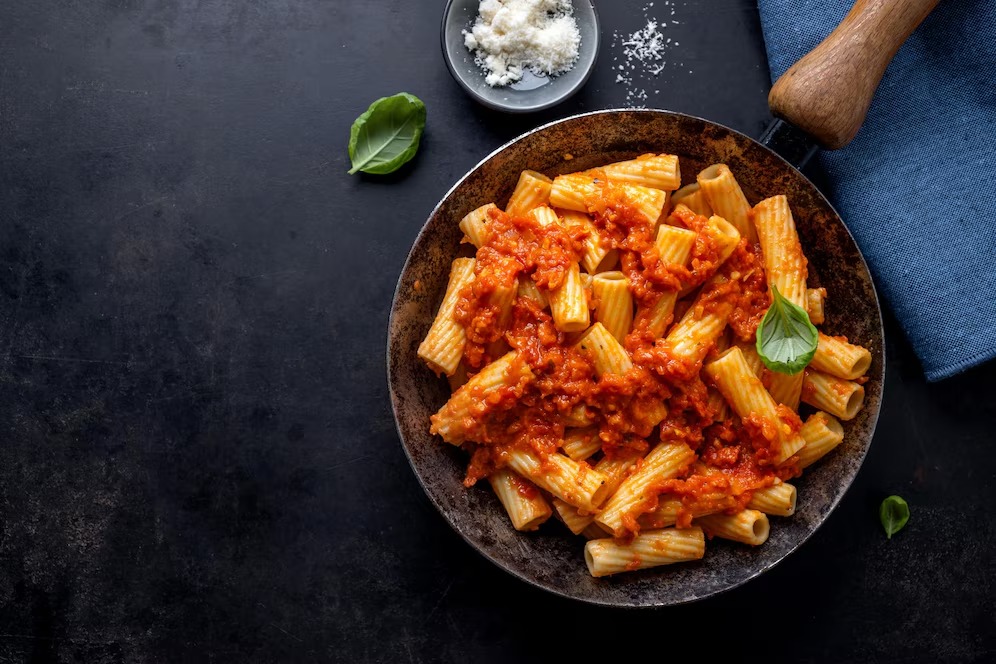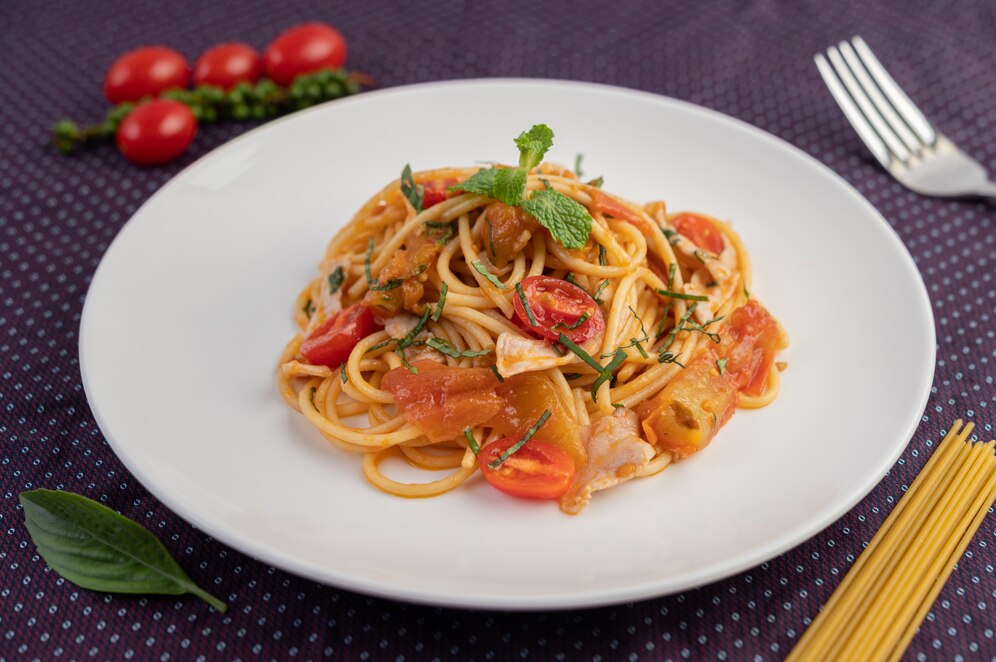
How to Cook Authentic Italian Pasta Like an Italian Chef
Pasta reigns supreme at the heart of Italian cuisine. Crafting it authentically transcends merely boiling water and slathering on the sauce. True Italian pasta is an art where perfect al dente texture dances with palate pleasure. It demands high-quality ingredients and a harmonious blend of flavours. Want to be a great chef or love cooking at home? This guide will help you master real Italian pasta techniques.
Texture plays a starring role in shaping our taste experience. The perfect al dente bite is loved by Italians. It takes pasta enjoyment to new heights. Plus, the magic of emulsification unites starch from pasta water with sauce. This lovely mix gives a smooth, rich texture that connects all the tasty parts.
Pro Tip from Experts: Save some pasta water. It boosts the sauce’s consistency and helps it stick to the pasta.
Quick Guide to Cooking Authentic Italian Pasta
- Use high-quality pasta made from durum wheat.
- Salt the water generously—pasta water should taste like the sea.
- Cook pasta al dente (firm to the bite).
- Do not rinse cooked pasta; it removes the starch that helps the sauce adhere.
- Combine pasta and sauce in a pan for the best flavour absorption.
- Always reserve some pasta water to adjust the sauce’s texture.
- Use fresh, high-quality ingredients for sauces.
Important Consideration: Don’t add oil to pasta water. It stops the sauce from sticking to the pasta.
Core Concept: The Art and Science of Cooking Italian Pasta
Cooking pasta is a blend of technique and tradition. Italian chefs believe the secret to great pasta lies in the following:
- Using the right pasta type: Different shapes pair with specific sauces for optimal taste and texture.
- Properly salting the water: Enhances the pasta’s natural flavour.
- Achieving the right texture: Overcooked pasta loses authenticity and becomes mushy.
- Emulsifying the sauce: Mix pasta with sauce and some reserved pasta water. This gives you a silky, well-coated dish.
- Respecting simplicity: Authentic Italian pasta dishes rely on a few high-quality ingredients rather than excessive seasonings or additives.
Step-by-Step Guide to Cooking Authentic Italian Pasta

1. Choose the Right Pasta
- Use high-quality, bronze-die-cut pasta made from 100% durum wheat.
- Choose the right shape for the sauce: e.g., spaghetti for carbonara, penne for arrabbiata, and tagliatelle for bolognese.
- Consider handmade fresh pasta for dishes like fettuccine alfredo or pappardelle with ragu.
2. Use Ample Water and Salt It Generously
- Use 1 litre of water per 100g of pasta.
- Add about 10g of salt per litre to season the pasta from within.
- Salt should be added once the water reaches a rolling boil to ensure even distribution.
3. Cook Pasta Al Dente
- Check the cooking time on the package. Then, start tasting 1-2 minutes early.
- Pasta should be firm to the bite but not raw in the centre.
- Cooking pasta al dente also ensures better digestion and a lower glycemic index.
4. Don’t Rinse the Pasta
- Rinsing removes starch, which helps the sauce cling to the pasta.
- Instead, transfer the pasta directly from the pot to the saucepan.
- If pasta sits for a while, toss it in sauce or olive oil to prevent sticking.
5. Reserve Pasta Water
- Save a cup of pasta water before draining.
- The starchy water helps thicken sauces and ensures an even coating.
- Gradually add pasta water while tossing the pasta in the sauce. This makes a rich, restaurant-quality dish.
6. Finish Cooking in the Sauce
- Toss pasta with the sauce in a pan over low heat for a minute or two.
- This allows the pasta to absorb the sauce’s flavour and creates a cohesive dish.
- Stir continuously for an even coating and to enhance flavour infusion.
7. Use Fresh Ingredients for Sauces
- Use high-quality olive oil, fresh tomatoes, garlic, and herbs.
- Avoid heavy cream in classic Italian sauces unless the recipe calls for it.
- Fresh basil, oregano, and chilli flakes add depth to various dishes.
- Skip pre-shredded cheese. Always grate fresh Parmesan or Pecorino Romano for the best flavour.
Best Practices & Additional Insights
- Go Big with Your Pot: Pasta flourishes in a spacious environment, free to dance.
- Stir with Flair: A gentle swirl keeps those strands from sticking together.
- Ditch the Sauce Avalanche: Pasta deserves a delicate hug of sauce, not a swim.
- Serve Fresh, Serve Hot: Enjoy pasta straight off the heat for maximum flavour.
- Wine Wisely Chosen: Light white wine waltzes with creamy pasta; bold reds thrive with tomatoes.
- Give Your Pasta a Toast: Italian chefs toast pasta in a dry pan. This infusion creates a more profound, nutty flavour essence.
Questions with Flavorful Answers

1. How can I tell if my pasta is al dente?
Take a bite—firm in the centre, but not a rock!
2. Is it okay to add oil to prevent pasta from sticking?
Not! Oil creates a slippery barrier, blocking sauce from embracing.
3. What’s the secret to reheating pasta perfectly?
Sauté it in a pan with a splash of reserved pasta water or olive oil.
4. How do I make my pasta water starchy enough for sauce?
Choose top-notch pasta, and remember—do not rinse after cooking!
5. Should I snap spaghetti before cooking?
Never! Authentic Italian chefs keep spaghetti whole for that classic texture.
6. Why do Italians finish pasta in the sauce?
This clever technique helps pasta soak up all the tasty flavours. It creates balance in every bite.
7. How can I prevent pasta from clumping together?
Use a generous amount of water; stir it occasionally. Don’t let drained pasta linger before mingling with sauce!
8. Can I cook pasta in sauce instead of water?
Boiling in water first is crucial. It helps achieve the right texture and ensures even cooking. This is especially true for one-pot meals!
Conclusion: Elevate Your Pasta Game

Cooking pasta in the Italian way means respecting tradition, technique, and quality ingredients. Follow these steps to cook pasta perfectly and honour Italy’s culinary heritage. Using authentic methods will make your pasta dishes restaurant-worthy. Whether you choose a simple aglio e olio or a rich bolognese, you can’t go wrong.
Remember, Italian cooking is about passion and simplicity. Each dish tells a story of history and tradition, so take your time, savour the process, and enjoy every bite. Cooking pasta for yourself or loved ones turns every meal into a celebration. Buon appetito!